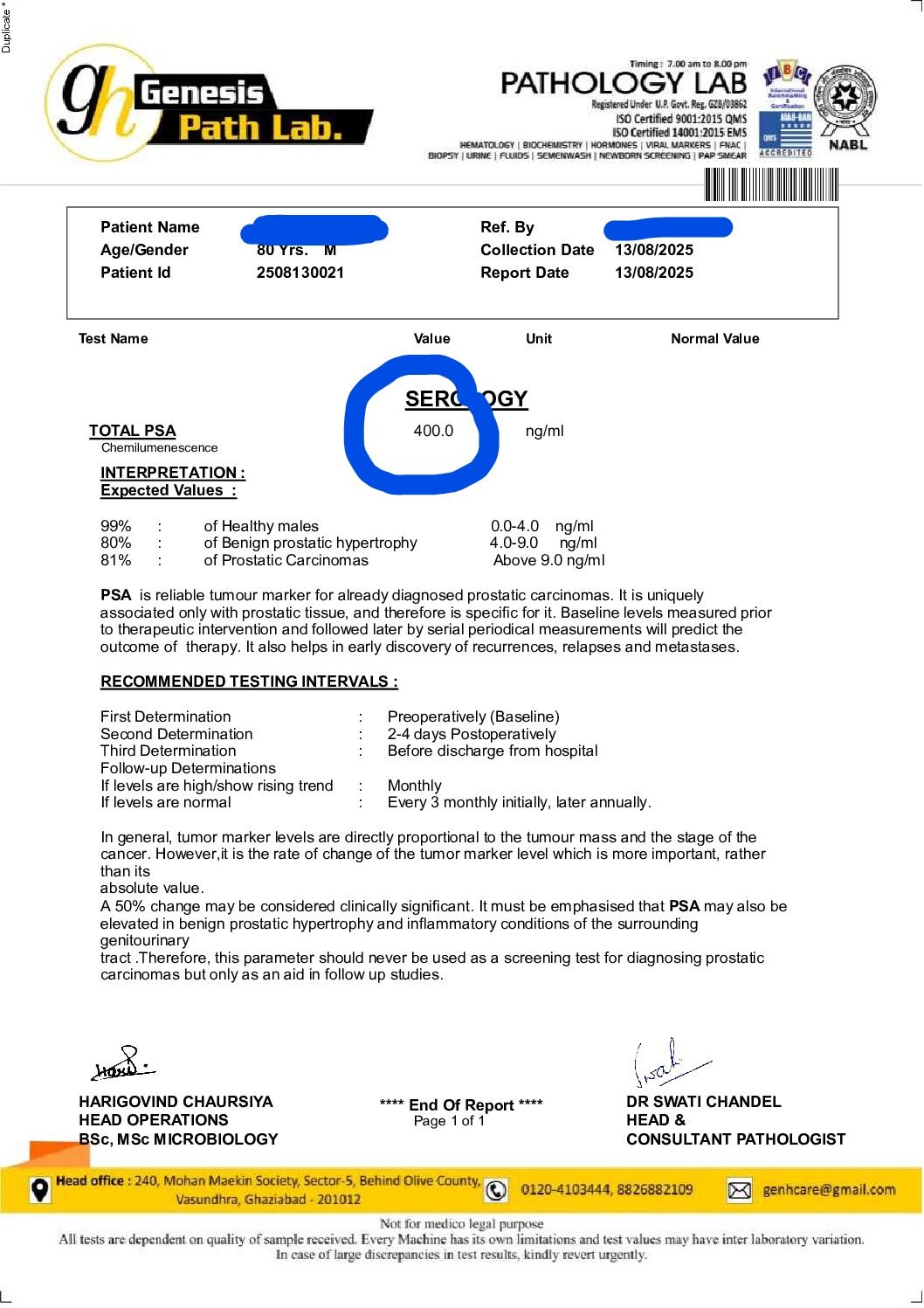. What is PSA?
-
PSA = Prostate Specific Antigen
-
A glycoprotein enzyme made by cells of the prostate gland
-
Normally, PSA is found in small amounts in blood.
-
When prostate cells are damaged (by cancer, inflammation, or even benign enlargement), more PSA leaks into the bloodstream.
2. How PSA Helps
-
Screening: In men over 50 (or earlier in high-risk groups), a PSA test can pick up abnormal levels even before symptoms appear.
-
Diagnosis support: A high PSA can be a red flag for prostate cancer, but it’s not specific — benign prostatic hyperplasia (BPH) and prostatitis can also raise PSA.
-
Monitoring: After prostate cancer treatment, PSA helps detect recurrence.
3. PSA Levels & Risk (ng/mL)
(Values may vary slightly by lab)
| PSA Level | Likely Interpretation |
|---|---|
| <4 | Usually normal (but cancer still possible) |
| 4–10 | “Gray zone” — could be BPH, prostatitis, or early cancer |
| >10 | Higher risk of cancer |
| >20 | Often advanced or metastatic cancer |
💡 Tip: PSA doubling time (how fast it rises) is more important than a single value.
4. Improving Diagnostic Accuracy
PSA alone can cause false alarms, so doctors often use:
-
Free PSA %:
-
Low free PSA% (<10%) → more likely cancer
-
High free PSA% (>25%) → more likely benign
-
-
PSA density: PSA level ÷ prostate volume (higher density → higher cancer risk)
-
PSA velocity: How much PSA rises per year (>0.75 ng/mL/year is suspicious)
-
Digital rectal exam (DRE) and imaging (MRI) for correlation
5. Key Points for Students
-
PSA is not a confirmatory test — it’s a screening + supportive tool.
-
Gold standard diagnosis = Prostate biopsy (guided by MRI or ultrasound)
-
Elevated PSA needs careful interpretation with age, prostate size, symptoms, and other tests.
One-liner memory aid:
“PSA is like a smoke alarm — it warns you, but you still need to look for the fire (biopsy).”



